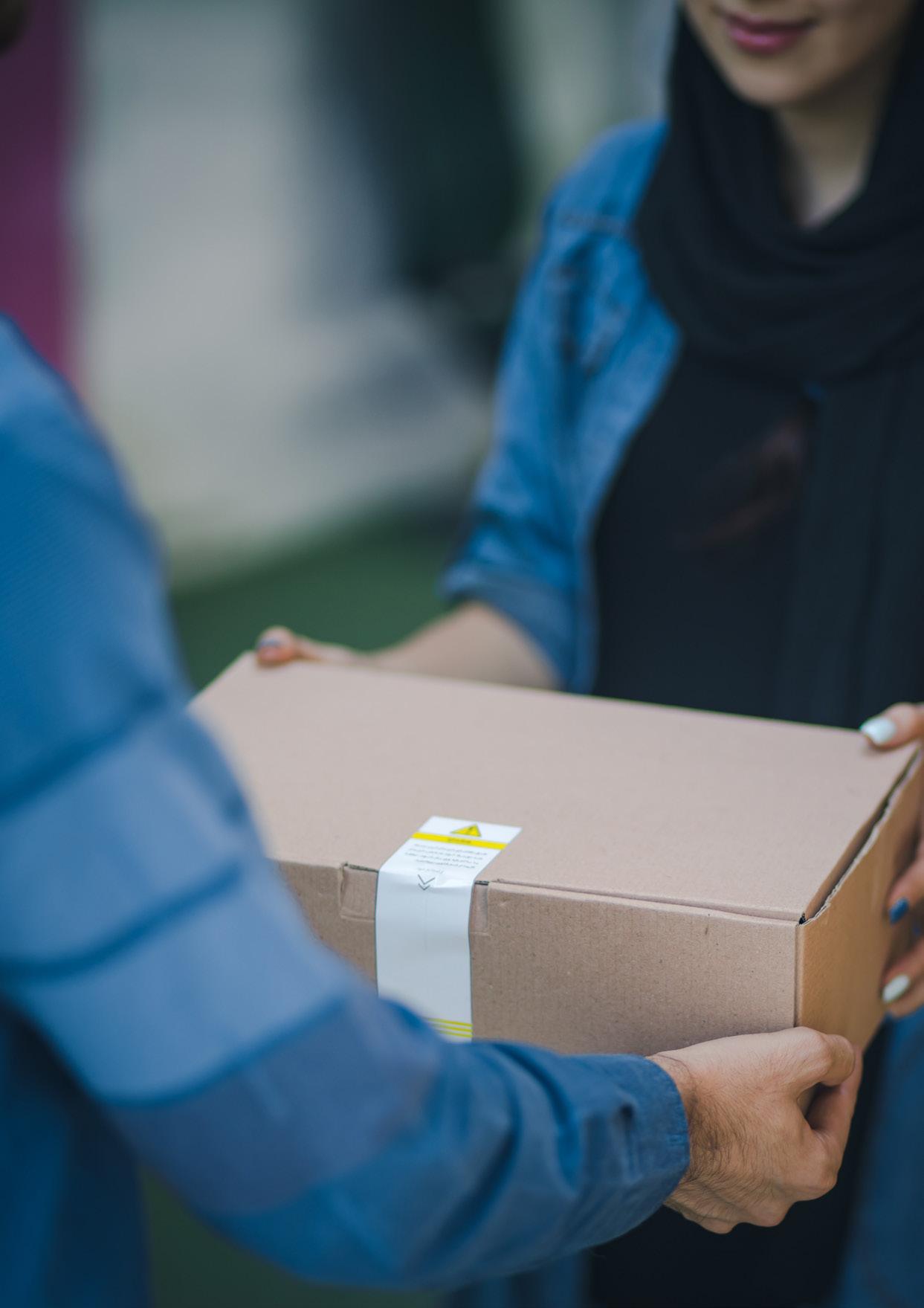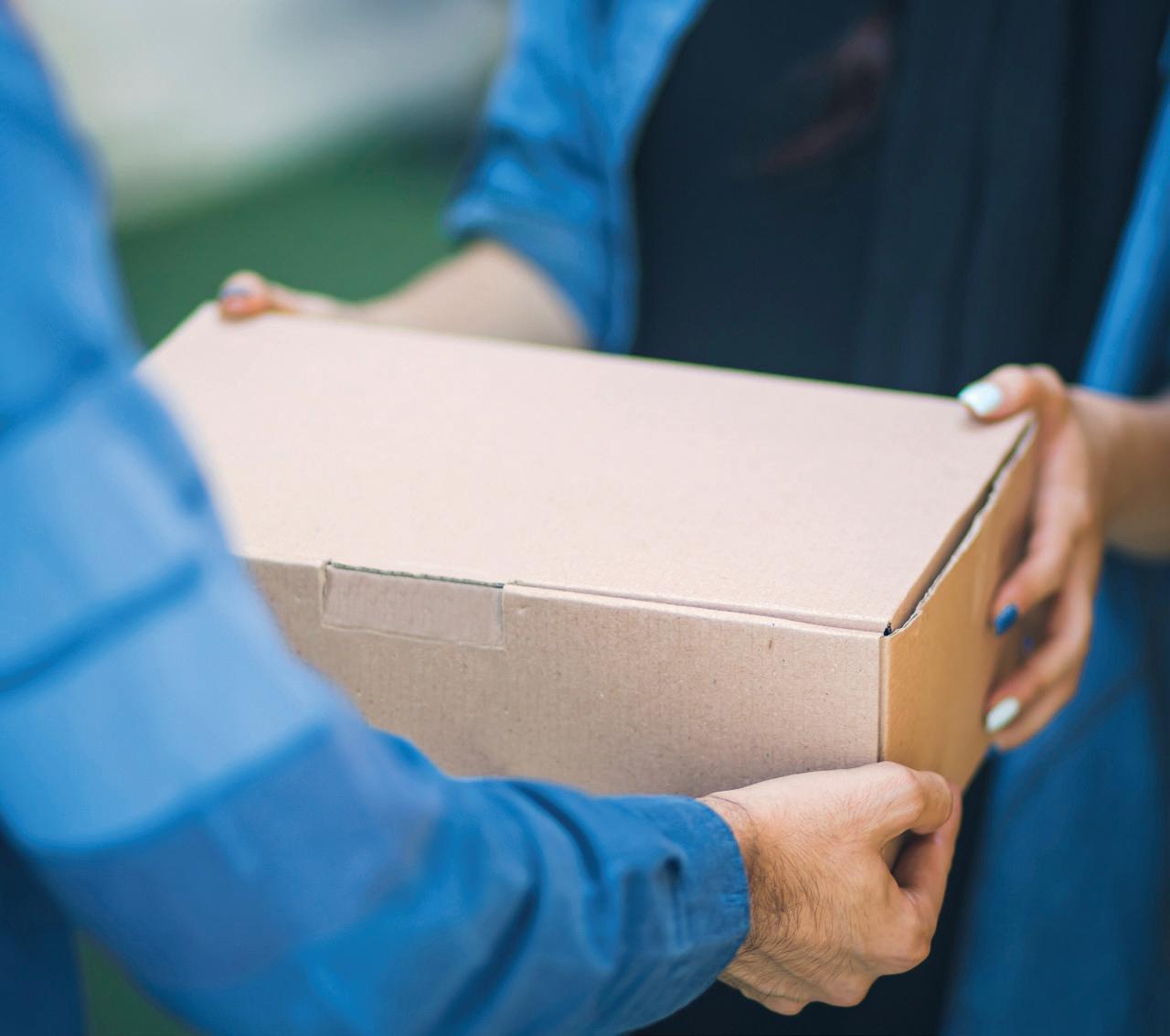
5 minute read
How to start your D2C journey
Direct to consumer (D2C) commerce is booming in popularity, and the lockdown of traditional retailers only fuelled this growth. But starting your D2C journey requires more than a website, marketing team and online sales channel expert; it requires D2C fulfilment.
Contributor: Synergy Retail Support Shipping speeds, tracking information, order updates, delivery locations, and branded boxes all need thought, planning and action. To help, we’ve created this guide on how to start your D2C journey: the fulfilment edition, covering:
Advertisement
The essential components of D2C fulfilment
The different D2C fulfilment methods
What to look for in a D2C fulfilment partner
Recap: what is D2C, and why is it so popular? Direct to consumer commerce is when a brand sells products directly to the end customer. This removes the middle wholesaler or retailer.
D2C commerce has grown in popularity thanks to successful brands including GHD, Caspar and the Dollar Shave Club. Now, existing brands want in the on the action to benefit from:
Complete control over branding, pricing and the customer experience
Larger profit margins with no middle-person cut
Ownership of the customer relationship and data
Future-proofing for the demise of the high street and popularity of D2C The essential components of D2C fulfilment D2C fulfilment differs significantly from retailer or wholesaler fulfilment - you already know that. But you also need to know exactly how much it varies so you can properly assess your existing supply chain and identify where changes must be made. The main components to consider for D2C fulfilment are: Technology integrations Whether your business’ D2C strategy involves a single ecommerce platform or multiple online marketplaces, you’ve suddenly got new technology to work with.
It’s essential that the sales channels used effectively integrate with your WMS, ERP system and accounting software, to promptly download orders, update statuses, upload tracking information and configure your inventory. Optimized warehouse space Not only do you need additional warehouse space to store your D2C inventory, but this space must be properly optimized to allow for efficient and fast shipping. You’ll be locating items, packaging orders and printing shipping labels under tight deadlines; your warehouse flow must accommodate this.
Products and packaging Packaging takes on a whole new meaning when delivering to the end customer. Forget pallets or cages, consumers want their deliveries in pretty boxes and recycled bags that contain perfect products and relevant inserts.
Packaging materials, quality control, spot cleaning and garment pressing all need considering.
Shipping Shipping becomes all the more complicated with D2C sales. Some customers want their items the next day, others are willing to wait for free delivery; some online marketplaces have delivery deadlines, others have late cut-off times; and some shipping carriers will be cheaper for light items, while others will be cheaper for heavier items. And we haven’t even touched upon peak shopping periods. To offer the best and cheapest shipping options for your customers throughout the year, you’ll need to work with and manage a variety of different shipping carriers from the beginning.
Returns It’s not just orders leaving your warehouse that you need to think about either. Faulty returns or unwanted items all need to be processed, fixed, repackage and restocked, while keeping the customer and accounts department updated. The different D2C fulfilment methods How much consideration you give these essential components of D2C fulfilment, depends on your D2C fulfilment method. There are three main direct to consumer fulfilment options: 1. In-house D2C fulfilment In-house D2C fulfilment is a common option for small and new brands, or those already running an in-house fulfilment operation for wholesalers and retailers.
The benefits of starting your D2C journey with in-house fulfilment are: •
Learning the ropes of D2C fulfilment while your order volumes are manageable
Keeping your overheads to a minimum while you establish your D2C sales
Establishing your fulfilment requirements before engaging a 3PL
However, the success of your D2C strategy relies upon a positive customer experience. If you don’t have the capacity, budget or expertise to provide reliable and fast deliveries in-house, this fulfilment method could restrict growth. 2. Outsourced D2C fulfilment Outsourced D2C fulfilment is a popular option for small to medium brands, or those who don’t have the capacity or expertise to start or continue delivering D2C orders quickly in-house. The main benefits of starting or continuing your D2C journey with a D2C third-party logistics provider (3PL) are:
Access to the latest logistics technology and D2C expertise for improving your fulfilment processes
Scalable warehouse space and services during periods of growth or peak sales
Cheaper storage rates, packaging materials and shipping costs through economies of scale
Not everyone is ready for outsourced fulfilment, but that doesn’t mean you won’t be. Our guide on when not to use a 3PL will help you to prepare your D2C business.
3. Amazon FBA If you’re starting your D2C journey on Amazon, Amazon FBA (Fulfilment by Amazon) is an alternative outsourced fulfilment option to consider.
Amazon FBA users benefit from Amazon’s extensive fulfilment network, warehouse spaces and scalable solutions during peak periods. However, multi-channel FBA fees can be excessive and prohibitive for growing D2C brands - not to mention the issue your marketing department will have with Amazonbranded boxes.
What to look for in a D2C fulfilment partner If you’re ready and eager to outsource your D2C fulfilment, there are six essential qualities you should look for:
Integrations - technology to integrate with your sales channels,
WMS and ERP system
Expertise - extensive experience fulfilling end customer orders Resources - space, staff and equipment to deliver a best in class service
Pricing - competitive and transparent pricing
Speed - the capability and competitiveness to delivery orders with speed
Partnership - working and scaling with you to grow your D2C brand Final thoughts Direct to consumer commerce is a powerful retail strategy that requires a powerful fulfilment operation behind it. Switching to D2C fulfilment isn’t easy, but with the right considerations and support, the hard work more than pays off. About Synergy Retail Support Synergy Retail Support is an established ecommerce logistics partner, helping ecommerce brands to deliver an outstanding delivery service to their customers. Get in touch to find out more.











